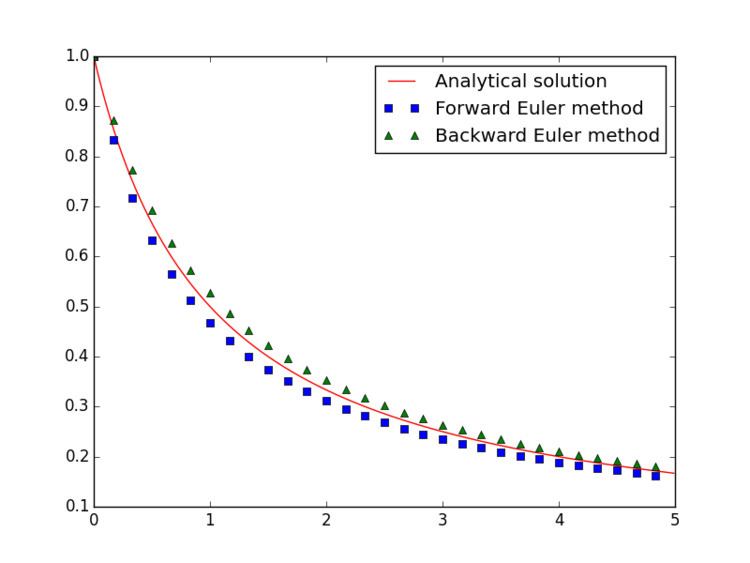 | ||
Explicit and implicit methods are approaches used in numerical analysis for obtaining numerical approximations to the solutions of time-dependent ordinary and partial differential equations, as is required in computer simulations of physical processes.
Explicit methods calculate the state of a system at a later time from the state of the system at the current time, while implicit methods find a solution by solving an equation involving both the current state of the system and the later one. Mathematically, if
while for an implicit method one solves an equation
to find
It is clear that implicit methods require an extra computation (solving the above equation), and they can be much harder to implement. Implicit methods are used because many problems arising in practice are stiff, for which the use of an explicit method requires impractically small time steps
Since the implicit method cannot be carried out for each kind of differential operator, it is sometimes advisable to make use of the so called operator splitting method, which means that the differential operator is rewritten as the sum of two complimental operators
while one is treated explicitly and the other implicitly. For usual applications the implicit term is chosen to be linear while the explicit term can be nonlinear. This combination of the former method is called Implicit-Explicit Method (short IMEX ).
Illustration using the forward and backward Euler methods
Consider the ordinary differential equation
with the initial condition
The forward Euler method
yields
for each
With the backward Euler method
one finds the implicit equation
for
This is a quadratic equation, having one negative and one positive root. The positive root is picked because in the original equation the initial condition is positive, and then
In the vast majority of cases, the equation to be solved when using an implicit scheme is much more complicated than a quadratic equation, and no analytical solution exists. Then one uses root-finding algorithms, such as Newton's method, to find the numerical solution.
In order to apply the IMEX-scheme, consider a slightly different differential equation:
It follows that
and therefore
for each
